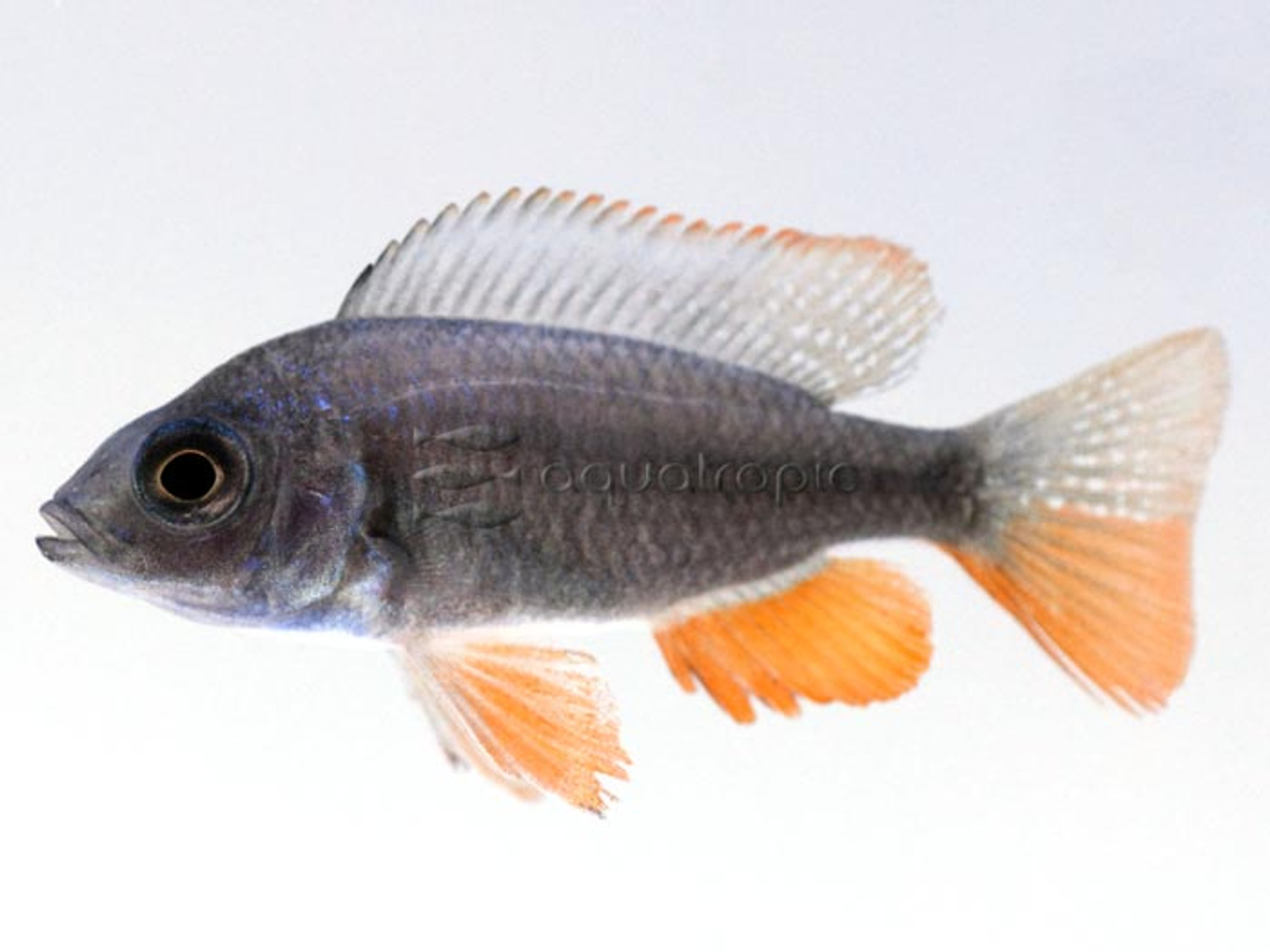Red Fin Borleyi Cichlid (Copadichromis borleyi)

African cichlids have a reputation among aquarists as being aggressive brutes, capable of terrorizing and murdering all who stand in their way. But really this description is most applicable to a few genera of rock-dwelling fishes known as the mbuna. Life among the shoreline boulders is tough and highly competitive, especially for those species which make a living grazing upon the algae and microorganisms growing atop the substrate. On the other hand, the closely related genera Mchenga and Copadichromis constitute a distinct lineage of peaceful planktivores known as the utaka.
Large shoals of Copadichromis form above the rocky shorelines and out above the open sand flats throughout Lake Malawi. The group is characterized by a large tubelike elongation to the mouthparts, visible when they are fully extended during feeding. This allows these fishes to quickly vacuum up aquatic insects and crustaceans. There are even a couple specialized species (C. pleurostigma, C. trimaculatus) which have taken to feeding heavily on phytoplankton.
Copadichromis borleyi is perhaps the most frequently seen species in captivity. Juveniles and females are especially attractive, deviating from the typical drab look with some eye-catching reddish fins. Males change dramatically, turning metallic blue, with crimson proliferating across the flanks. Fully grown, the species reaches an impressive eight inches in length.
Utaka show a diverse array of breeding strategies. Those associated with sandy environments generally establish their breeding territories in a self-constructed pit built beneath beneath nearby rocks. Others (e.g. C. chrysonotus) spawn in the water column. For C. borleyi, breeding is done among the boulders, with the mouth-brooding females swimming in groups high up in the water column.
As with all utaka, this species is undemanding in an aquarium, feeding readily on nearly any foods offered. Groups can be safely kept together and would make for a stunning species-only display, though most opt to keep single specimens or breeding pairs. Avoid mixing with overly aggressive mbuna species, though many other Malawian and Tanganyikan genera make for suitable tankmates, such as the Aulonocara peacock cichlids or docile groups like Cyrtocara, Protomelas, Placidochromis, Otopharynx and Sciaenochromis.